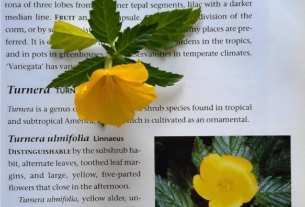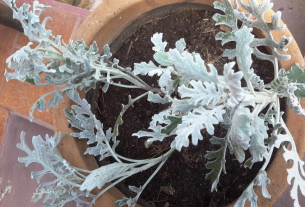By Terry Sovil on the October 2019 Edition
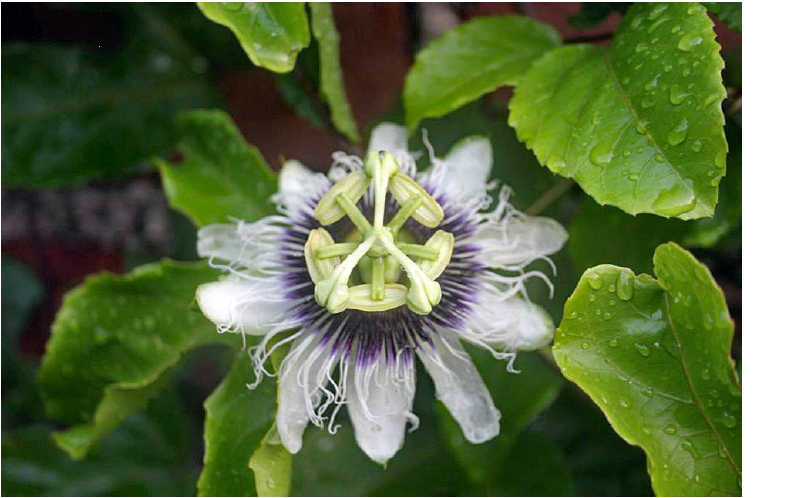
I was gifted with a couple of branches about 2 feet / .61 meters that suddenly grew so fast I couldn’t keep pace with it. I didn’t know what it was. They told me to hang some wire on the wall to help guide it. The growth of the plant was over-whelming. Then it had a flower but only for 12-24 hours. Then it grew fruits. I had to learn more about it.
It is a Passionflower or Vine, part of a genus that has about 600 species of flowering plant. The family is Passifloraceae. These plants are mostly tendril-bearing vines like mine. Some are shrubs or trees. They can be woody or herbaceous. This plant produces a beautiful flower with a very distinct corona.
Out of the 600 species of Passiflora, only one, P. edulis Sims, produces passionfruit. Passiflora edulis has two types known as P.edulis, a purple passionfruit and P.edulis flavicarpa, a yellow passionfruit which mine is. This type is a vigorous vine, especially in the tropics, and the plant may grow over 20 feet / 6 meters in a single year. Mine grew almost that much. If had known, I would have built a PVC pipe trellis of some kind. Probably not too late!
From my reading, the flowering season is from April to November but can be year-round if conditions are right. I kept it watered lightly fertilized. I did hang some wire to help it “attach” but need more and for it to be organized better. The long tendrils need support.
While I watched the vines grow, I noticed a flower. Oddly beautiful and gone the next day. The flower lasts for just 12-24 hours then closes. The little “bulb” closed and after a short time the fruit appeared. The plant lives 4-6 years. The ovula on the flower is what grows into the fruit (see photo).
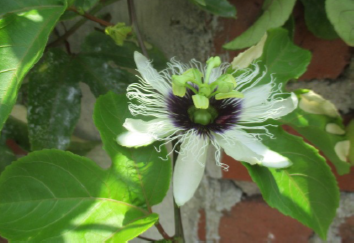
The fruit can be eaten fresh. The seeds are edible, but more of ten it is seen in drinks, desserts, sauces and other foods. The yellow form, lilikoi is its Hawaiian name, tends to be more of the previous items and not so much for fresh eating. Many find the pulp too tart or acidic although it varies from vine to vine.
The lilikoi has an origin with little information. Perhaps a cross between types or a wild development. It is well established throughout Pacific Islands and parts of Central and South America. It is an important commercial crop but frequently considered a pest in many regions, like Hawaii. Bees are critical to cross pollinating the flowers to form fruit.
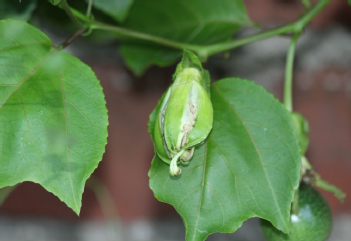
When trying to keep the vines sorted out and growing, you need to prune it in the spring. The vines are all over but generally off one big stem. You need to trace your vine back to its source, so you are sure you don’t cut off a major stem, since smaller stems grow out from that and obtain their water from it.
Too little fertilizer will also affect a passion vine. My fertilizer was along the line of a single handful. I read that each plant needs 10-5-20 Nitrogen, Phosphorus and Potassium (NPK) fertilizer at a rate of 3 pounds per plant a couple of times per year. Our soil here seems to be all it needs.
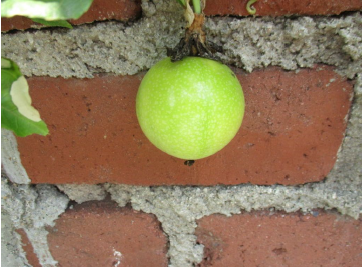
They can also attract pests. You must stay alert for ants, aphids, inch worms and some butterflies (or moths). The fruit likes full sun near the coast, but inland growth needs some protection from hot, dry heat.
You don’t want to over fertilize which can get the plant to grow more with less emphasis on fruit development.On the next page, you’ll find two links to YouTube videos on these plants. Watch for the “Skip Ad” in the lower right so you can move past the commercial.

The first video is very good at showing the plant / vine development. The vines “reach out” looking for something to attach too.
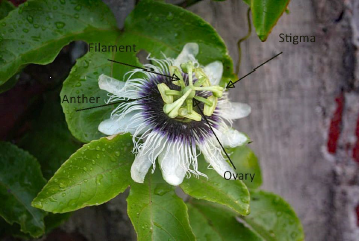
The second link focuses on the bud to the fruit. It is detailed and runs about 5 minutes. They number the steps on the lower left from 1 to 14. You can always pull the little cursor ahead. There is some text but no real narration. This video shows the same type of fruit that is growing on my vines. They are ready to harvest when they are bright yellow!
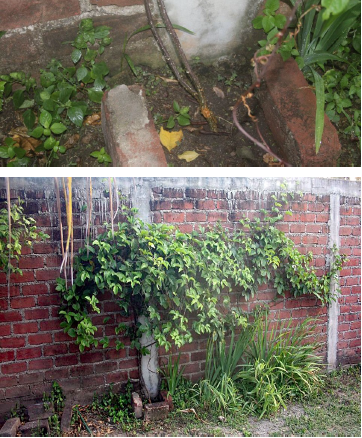
The full edition or view it online
—
Terry is a founding partner and scuba instructor for Aquatic Sports and Adventures (Deportes y Aventuras Acuáticas) in Manzanillo. A PADI (Professional Association of Dive Instructors) Master Instructor in his 36th year as a PADI Professional. He also holds 15 Specialty Instructor Course ratings. Terry held a US Coast Guard 50-Ton Masters (Captain’s) License. In his past corporate life, he worked in computers from 1973 to 2005 from a computer operator to a project manager for companies including GE Capital Fleet Services and Target. From 2005 to 2008, he developed and oversaw delivery of training to Target’s Loss Prevention (Asset Protection) employees on the West Coast, USA. He led a network of 80+ instructors, evaluated training, performed needs assessments and gathered feedback on the delivery of training, conducted training in Crisis Leadership and Non-Violent Crisis Intervention to Target executives. Independently, he has taught hundreds of hours of skills-based training in American Red Cross CPR, First Aid, SCUBA and sailing and managed a staff of Project Managers at LogicBay in the production of multi-media training and web sites in a fast-paced environment of artists, instructional designers, writers and developers, creating a variety of interactive training and support products for Fortune 1000 companies.

